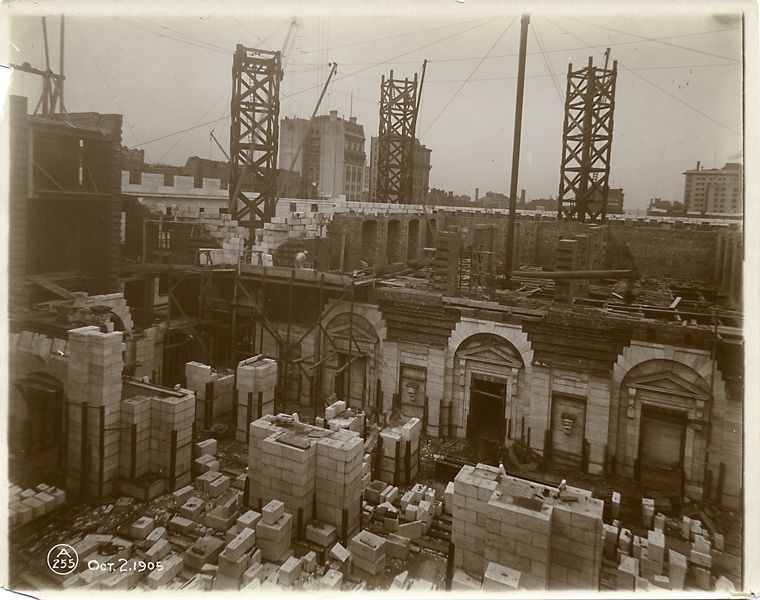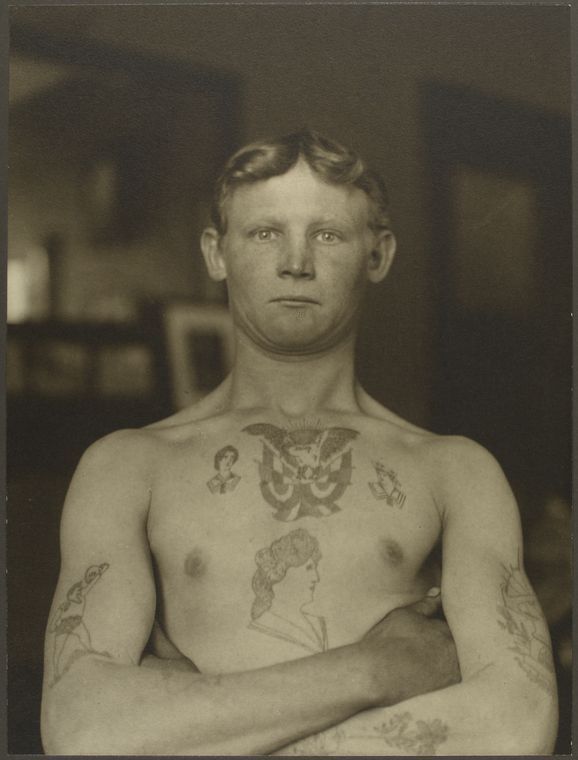Spotlight on the Public Domain, For Teachers
Using Public Domain Materials in the Classroom
This is one of a series of blog posts related to the NYPL Public Domain Release: discover the collections and find inspiration for using them in your own research, teaching, and creative practice.
Classroom educators understand that addressing local, state, and national learning requirements and standards for their students in all subject areas is their primary responsibility. You can use our treasure trove of digitized public domain materials as educational resources in K-12 classrooms.
Take a look at the ideas below for integrating specific tools, items and collections into lesson plans for students of various ages. The great thing about the public domain launch and related digital tools is that they can address both very general academic habits and skills as well as support the understanding of more specific historical content for older students.
Knowledge Organization

Fundamental to engaging in critical thinking in all age groups is practicing categorization skills. The 180,000+ items included in the NYPL’s public domain launch have been remixed into various groupings through an interactive visualization tool.
- Allow students to practice both basic technology and informational literacy skills through exploring this interactive (i.e., manipulating a touchscreen or using a keypad and mouse to highlight specific items and understanding keyword groupings).
- As a follow-up, ask students to organize classroom materials in similar categories (for example, have younger students organize publicly owned classroom resources by color or in chronological order, or task a high school homeroom with thinking through, identifying, and creating genres for their collective work over the course of a school year).
Time Travel on Fifth Avenue

Are you a New York City public elementary school educator? Enhance your K-4th grade Social Studies curricula through interactives designed to investigate New York’s changing landscape over time.
- Time travel to Fifth Avenue as it appeared in 1911, and ask your students to make direct observations about the differences between that year and the contemporary scenery captured through Google’s Street View.
- Encourage younger students to use these observations as the basis for either hypothesizing what common elements are found in communities, why this street looks so different in 2016 versus 1911, or ask them to directly connect these observations to what they know about New York’s climate, geography, and industrial history.
Time Travel the United States
If you’re teaching in other locations, never fear: there are countless visuals and texts within the public domain resources you can use in similar inquiry-driven activities with your students. I particularly love the Farm Security Administration photograph collection and the massive, comprehensive Robert N. Dennis Collection of stereoscopic views of all the regions of the United States for this purpose. For those collections, students will have to practice digital research skills, which is an added bonus for modern educators.

A related note: I once had a student say to me: “Why do you have old stuff?” This is an important question for all educators to ponder, but NYPL can help. Historical primary source materials may not appear to be as visually engaging to teens as Instagram. If you decide to dive into the aforementioned stereoscopic views collections, why not have students first play around with Labs’ Stereograminator tool? Generating original GIFs may be a great entry point for older students resistant to working with historical documents.
-
Start with students’ own images sourced from a class Flickr account and introduce historical material as a way to compare and contrast their experiences or home neighborhoods with the past.
Civil Rights
Are you working with middle or high school students on dynamic curricular topics that aren’t fossilized, but are in fact more relevant than ever, such as the Civil Rights era? The public domain materials can support this work, too. In particular, the Navigating the Green Book interactive, drawing from the collections of the NYPL Schomburg Center for Research in Black Culture in Harlem, provides students with a way to apply historical evidence of the black experience to mapping activities and allows them to experience firsthand the everyday choices black Americans had to navigate in 20th-century America.
Immigration
Working on an immigration unit with your 8th graders? Access photographs of Ellis Island and other documentation of the social conditions facing new Americans at the turn of the century. Our collection of photos by Lewis Wickes Hine, while not part of the public domain release, also capture this period of intense change in the early 20th century.
- Download and print selections, and have students curate their own exhibit with original accompanying narrative text rooted in classroom-based research.
You can extend students’ digital exploration into the immigrant experience through NYPL’s Emigrant City transcription tool, a crowdsourcing effort to extract specific loan and mortgage information from New York’s Emigrant Savings Bank records. The marking of records, transcription, and verification of the newly transcribed information can be done as a whole class, small groups, or individually, and is a great way for students engage with census-related informational texts and to practice hard digital literacy skills. Participatory interactives like this are great for students, and their work will lead to a fuller historical record for future researchers and will feed into future library projects.
American Revolution

Studying the American Revolutionary era and its key figures? Search and download original papers by Alexander Hamilton, Thomas Jefferson, and James Madison for either written or digital annotation and analysis by students:
- What in these documents is still relevant to the United States today?
- What topics and governmental policies do students think need amending, and why?
- Enhance these debates through keyword searches into the public domain for accompanying visuals. Mix the media, physically or digitally!
The Public Domain
Public domain materials belong to you and your students. As an added bonus, these collections and items are verified and part of this offering due to their scholarly value: you can trust that what you see here is worthy of study.
A starting point for integrating this digital treasure trove of content in classrooms of all ages is through discussions about properly sourcing reference materials in original pieces of writing and/or other demonstrations of student learning and thinking, but there are endless possibilities for integrating the materials themselves into regular classroom use.
These suggestions only scratch the surface of the public domain materials’ educational and creative potential. Library staff will continue to develop methods and tools for increased public and educational access to and engagement with our research collections. We’re excited to continue developing ways to serve youth and educators in New York and beyond, and will be sure to keep you in the public domain loop.
Read E-Books with SimplyE
 With your library card, it's easier than ever to choose from more than 300,000 e-books on SimplyE, The New York Public Library's free e-reader app. Gain access to digital resources for all ages, including e-books, audiobooks, databases, and more.
With your library card, it's easier than ever to choose from more than 300,000 e-books on SimplyE, The New York Public Library's free e-reader app. Gain access to digital resources for all ages, including e-books, audiobooks, databases, and more.
If you don’t have an NYPL library card, New York State residents can apply for a digital card online or through SimplyE (available on the App Store or Google Play).
Need more help? Read our guide to using SimplyE.

Comments
Ringraziamenti
Submitted by Antonio Manno (not verified) on January 29, 2016 - 12:14pm
Are there any architectural
Submitted by Allannah Thomas (not verified) on November 16, 2020 - 12:27pm
Hi Allannah, Please contact
Submitted by Carrie McBride on November 17, 2020 - 10:31am